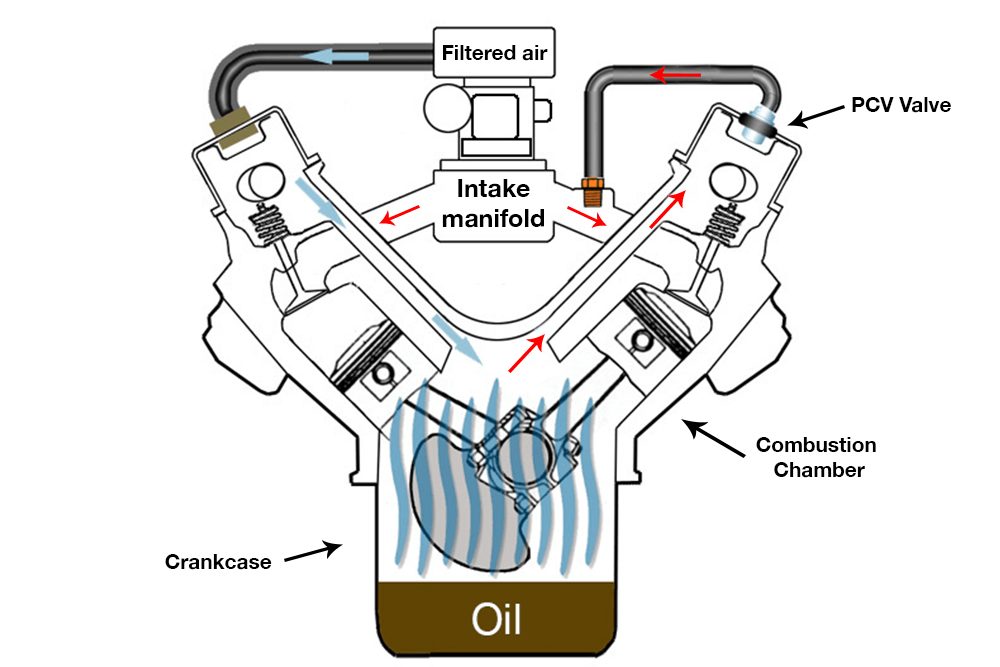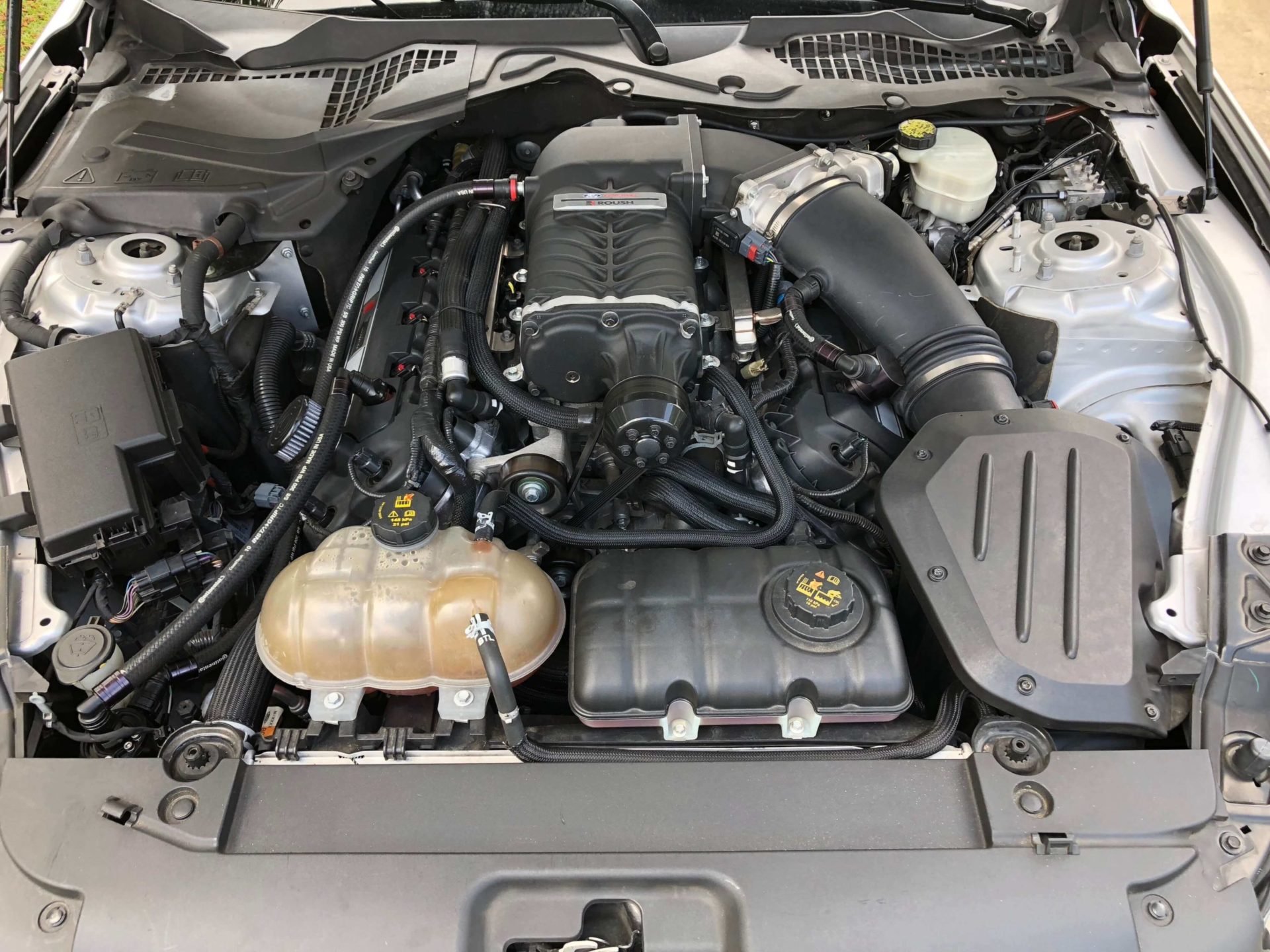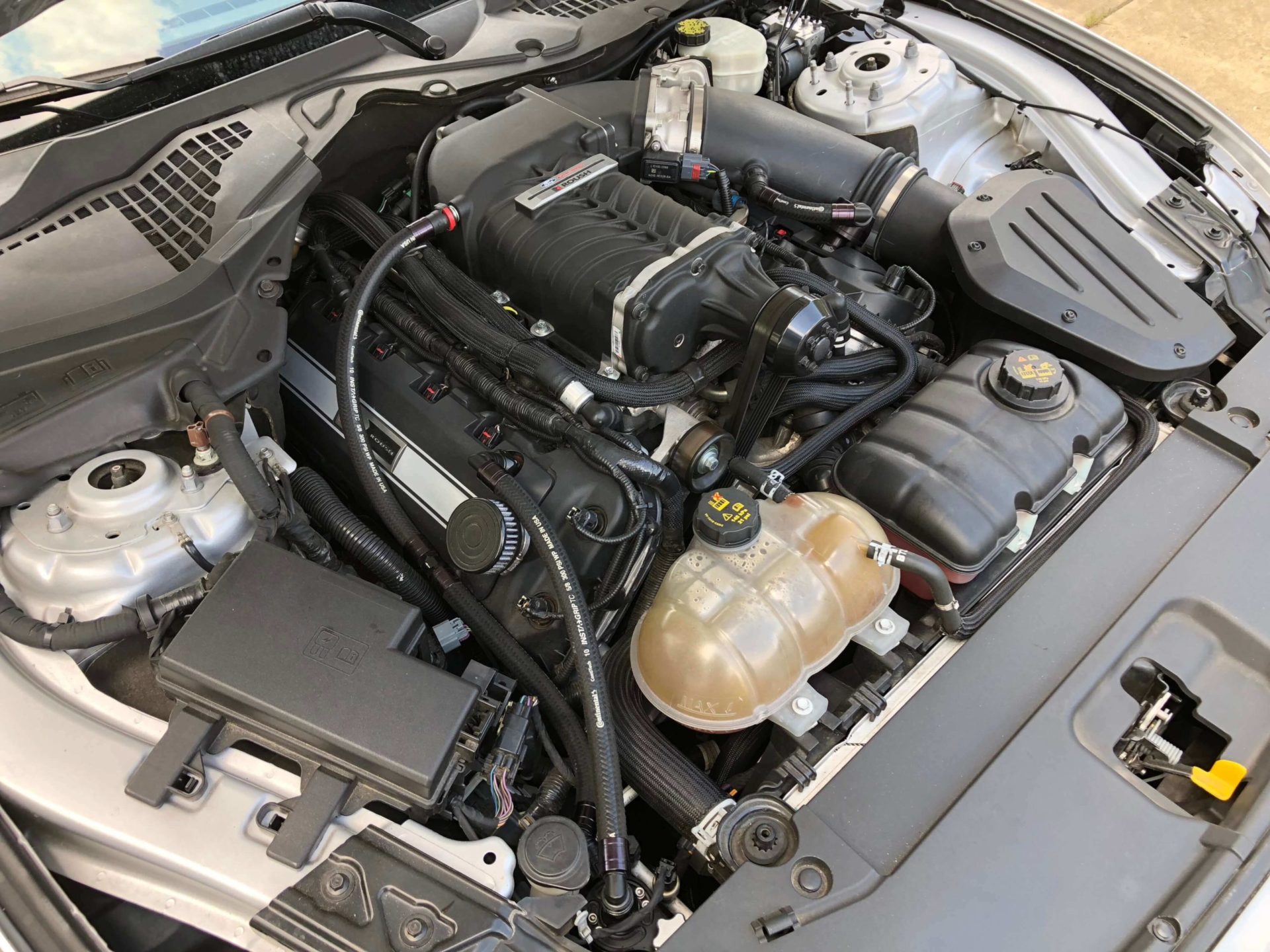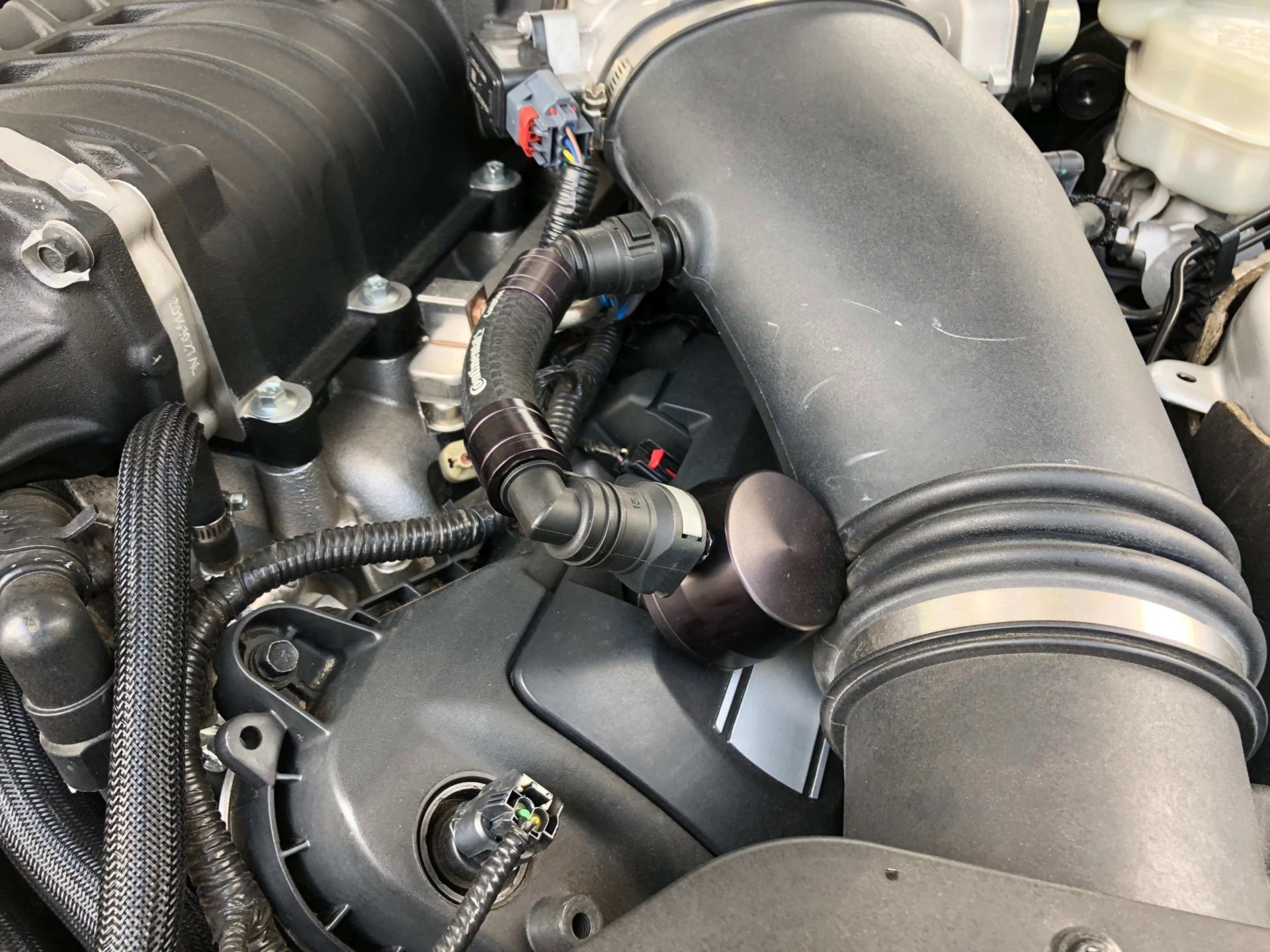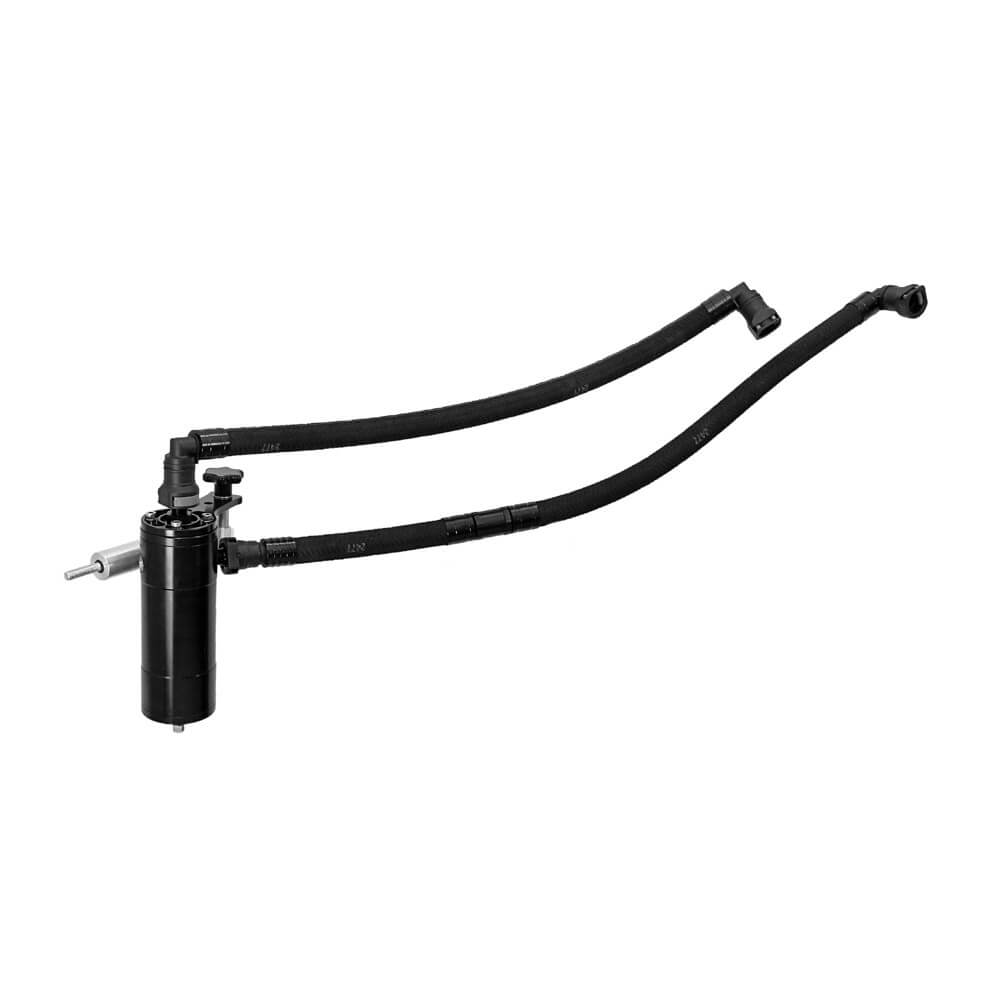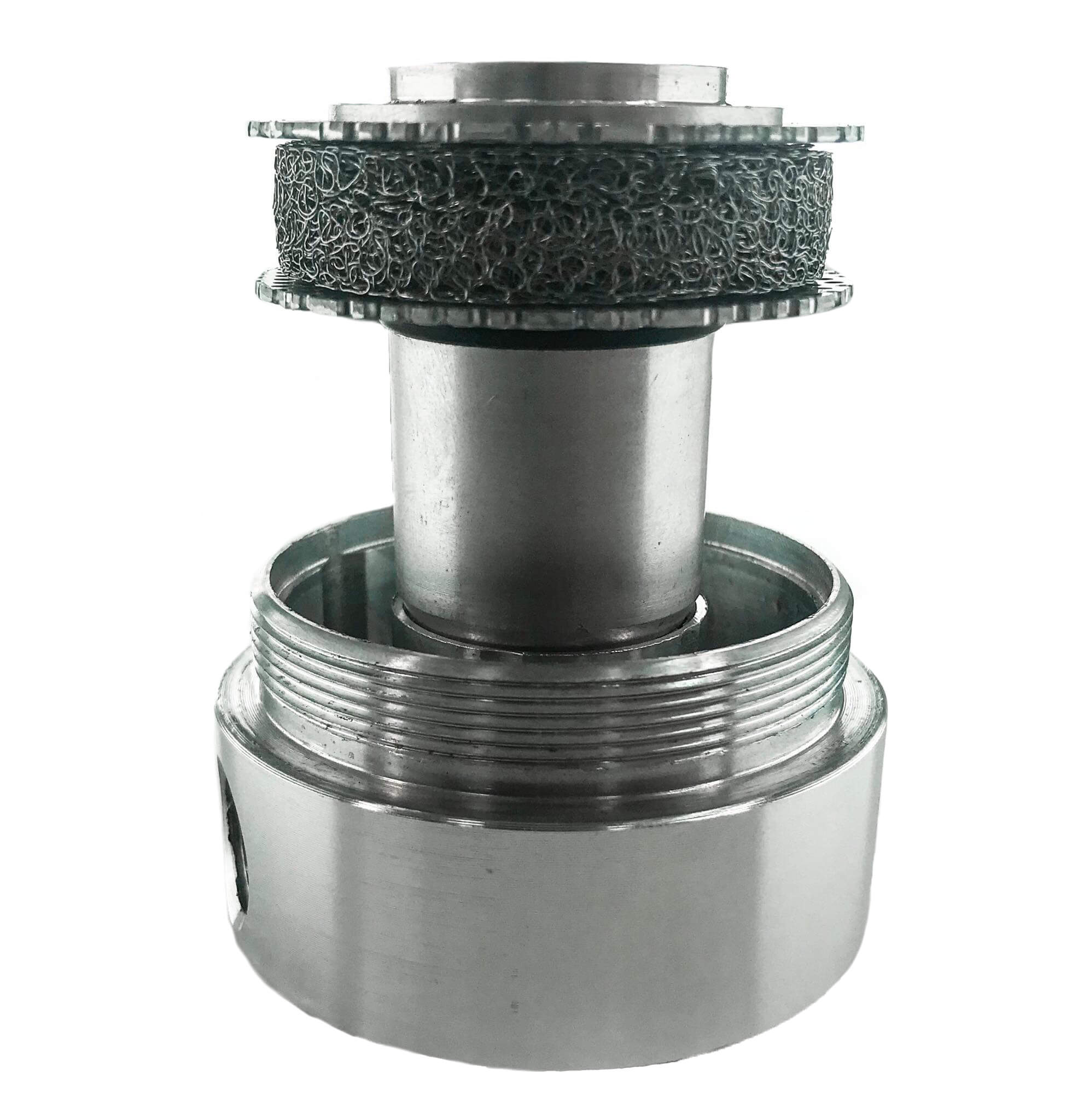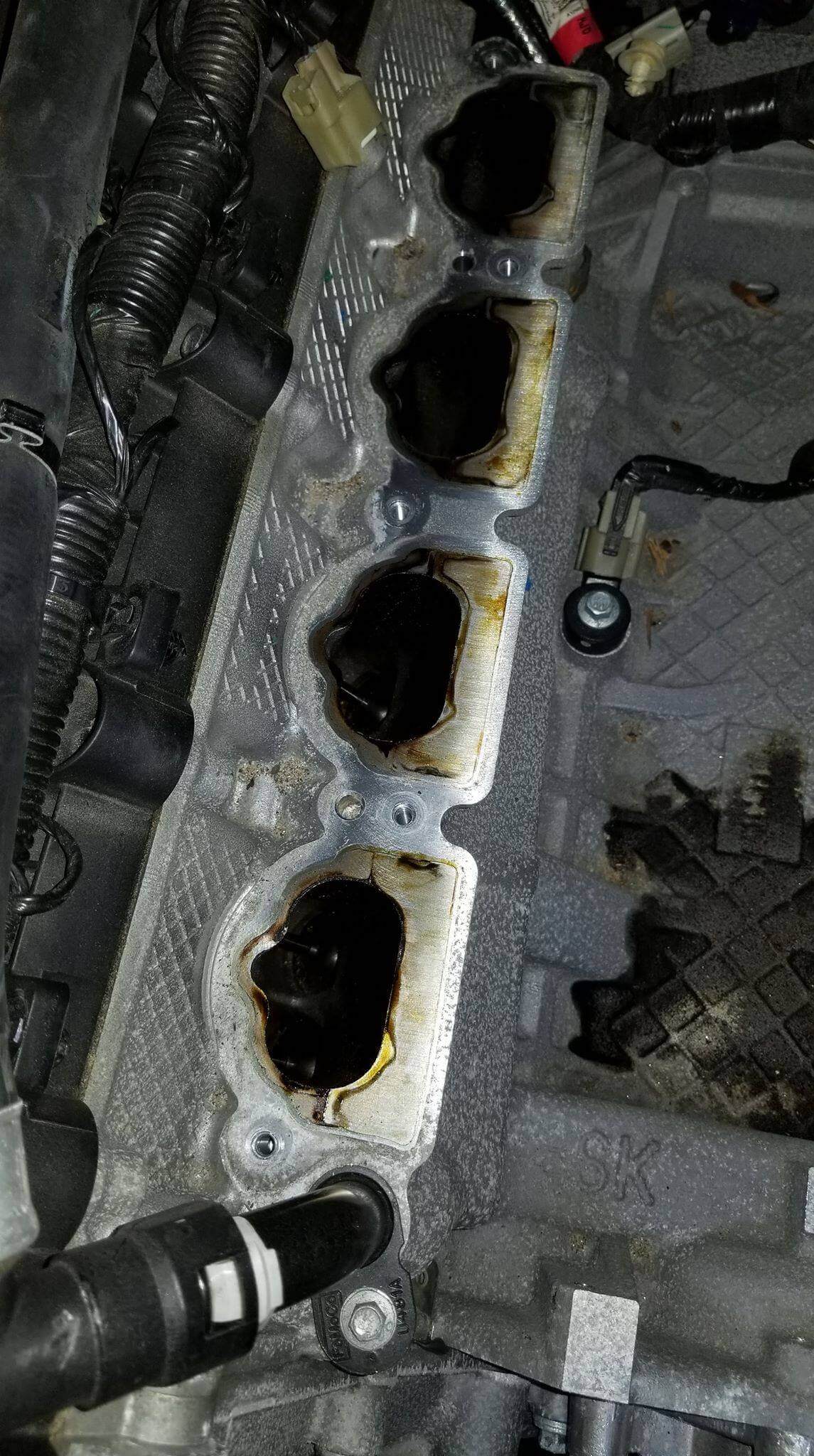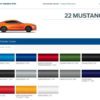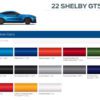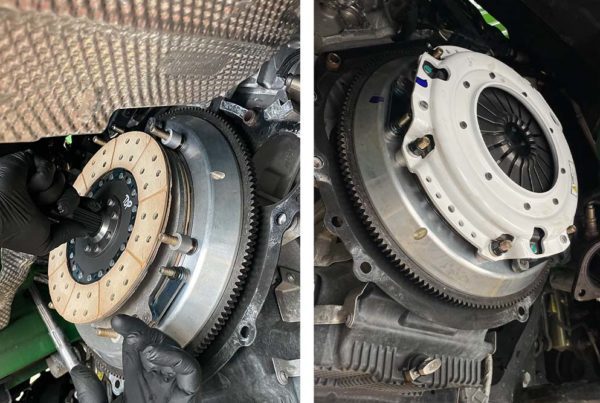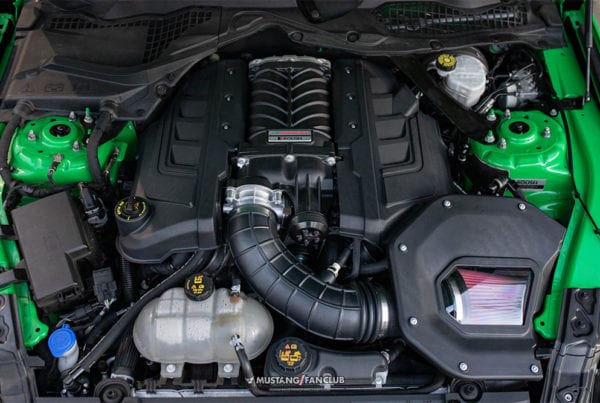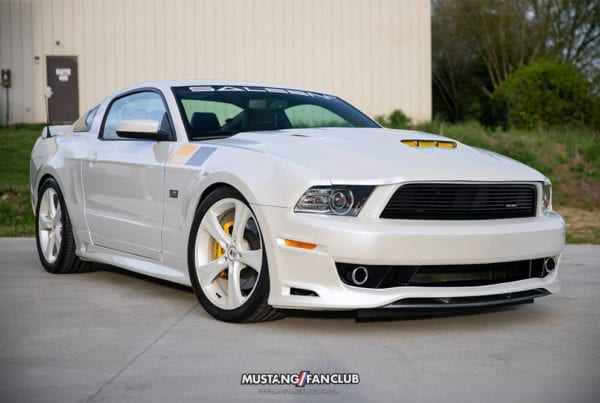Do you need a Mustang oil catch?
No, you do not need a UPR oil catch can. Would you benefit from having one on your Mustang? Absolutely! Allow me to educate you on how a UPR catch can prevent horsepower-robbing sludge build up inside your engine’s vital components.
What is the PCV (Positive Crankcase Ventilation) System?
The PCV system is setup to relieve pressure inside your crankcase. During combustion, pressure on the top side of your piston pushes combustion gasses, fuel and droplets of oil past the piston rings and into the crankcase. The combustion of air and fuel creates a mixture known as oil blow-by.
Oil blow-by can create horsepower robbing sludge build up that coats parts of your intake system and engine with excess oil and fuel.
To keep your crankcase from becoming pressurized, the blow-by is pulled out by the PCV system. The blow-by is routed through the intake manifold and sent into the combustion chamber to be burned off. An oil and fuel mixture going through your intake system doesn’t sound good at all, does it?
PCV System Operation Explained
In an internal combustion engine, excessive crankcase pressure can cause oil leaks and can adversely impact your engine’s performance. Simply ventilating crankcase pressure releases harmful hydrocarbons into the atmosphere and creates a foul oil smell. So automotive manufacturers utilize PCV systems to evacuate the crankcase without polluting the environment.
As you can see in the diagram above, the PCV system draws blow-by out of the crankcase, passes it through the combustion chamber, and fills the crankcase with clean air. Let me break down the process for you.
- Combustion gases blow past the piston rings, which pressurizes the crankcase with contaminated air containing oil vapor and unburnt fuel. This contaminated air is commonly referred to as “blow-by”.
- Vacuum from the intake manifold draws the blow-by out of the crankcase through the PCV valve and into the intake manifold.
- The evacuated crankcase air is displaced by clean, filtered air which is drawn from the engine’s air intake and passed through to the crankcase.
- Meanwhile, the contaminated air (blow-by) passes through the intake manifold and into the combustion chamber, where it leaves harmful deposits and reduces the octane rating of the air/fuel mix when it is ignited and then passed through the exhaust.
What is a Mustang oil catch can?
First, I would like to preface this with my history with the fine folks over at UPR. I have been using UPR Products catch cans for a few years now. I had one on my 2011 Mustang GT and my current 2015 ROUSHcharged Mustang GT. Since I am familiar with their catch cans I will be using their line of products as examples. On my 2015 Mustang GT, I have both the passenger and driver-side catch cans installed.
An oil catch can is exactly what is sounds like. A CAN that CATCHES OIL!
All jokes aside, the purpose of a UPR catch can is to allow the gasses to be vented from the crankcase and prevent the oil and fuel blow-by from entering the intake manifold and combustion chambers.
Each UPR catch can is “Plug-N-Play”, meaning installation is super easy. The oil catch can is placed inline between the crankcase and the intake system.
UPR catch cans feature an internal baffle and filtration system. This internal filtration system is very important because it allows the hot oil blow-by to cool down and condense at the bottom of the can.
Oil blow-by can reduce your engines performance in many ways:
- Sludge build up on the intake system (Reduced air flow)
- Fouled spark plugs from oil and vapors coating them (Misfires and shorting of plugs)
- Build up coating your cylinders lowers the octane rating of the air-fuel mixture (could produce knock)
- Carbon build up on the valves (Reduction in air flow)
- Sludge build up on the intercooler (Reducing heat transfer or cooling with forced induction applications)
My experience with oil catch cans on my Mustangs.
If you’ve been around the Mustang community for some time now, I’m sure you have heard the term oil catch can or oil separator. When I first got my 2011 Mustang GT back in the day, everyone always told me I need to get a catch can because the Coyote motors have a lot of oil blow by. I brushed them off and didn’t really think twice about it. Until one day, I saw someone post a video on Instagram showing a pool of oil underneath their supercharger they just removed. Since then, I have been a firm believer in oil catch cans!
The video below shows you how much oil was captured inside my UPR Products Single Valve Oil Catch Can on my 2015 Mustang GT with a ROUSH supercharger.



